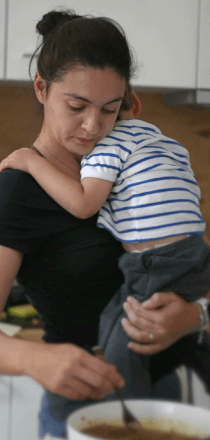Low-income households at breaking point and routinely skipping meals
Tuesday 15 October: Low-income households are enduring the highest rates of food insecurity since the onset of the cost-of-living crisis, according to the Foodbank Hunger Report 2024, released today.
Now in its eleventh year, the report from food relief organisation Foodbank, surveyed 4,260 people and highlights the growing divide between those who are able to absorb or adapt to rising costs and those being left behind. More than 870,000 (48%) of Australia’s low-income households (earning less than $30,000) are experiencing food insecurity. This is the highest rate since the onset of the cost-of-living crisis, up 5% on 2022.
The report offers an insight into the state of hunger across the country and reveals more than half (59%) of all food insecure households are experiencing the most severe level of hardship, regularly skipping meals or going entire days without food.
Single parent households are the hardest hit with over two-thirds (69%) facing food insecurity and 41% of these also experiencing the severest form.
Foodbank Australia CEO, Brianna Casey AM is extremely concerned with the latest findings.
“We warned at the beginning of the cost-of-living crisis that low-income households were always going to suffer first, worst and for the longest and these findings confirm this. We are seeing families that were just getting by, now reaching their limits and making unimaginable choices.”
This year’s report highlights the most common contributing factors to food insecurity in Australia.
“Unsurprisingly, people are being forced to cut back on the most basic of essentials, nutritious food, because of the combination of higher costs of housing and essential goods, particularly food and utilities, while wages fail to keep pace – all of which are entirely outside of the control of most Australian households,” said Ms Casey.
Food relief charities such as Foodbank are continuing to experience heightened demand, not only because of the ongoing impacts of the cost-of-living crisis, but also the increase in awareness of where to get help, coupled with core support systems, such as family and friends, no longer being able to assist.
More than half (53%) of food insecure households reported they are receiving food relief more often than a year ago. Worryingly, food insecure households receiving help from friends and family has dropped significantly from 32% in 2023 to 25% in 2024.
“This is an alarming statistic that demonstrates just how desperate the situation has become for those who were once a lifeline suddenly finding themselves living pay to pay, watching every dollar and sadly, no longer in a position to extend help to loved ones and friends.
“We know it’s going to take months, if not years, for many families to bounce back. We will continue to wrap our arms around our communities for as long as it takes, doing our bit to help nutritious, culturally appropriate food get to as many struggling households as possible,” said Ms Casey.
 Contact us
Contact us Log in
Log in

